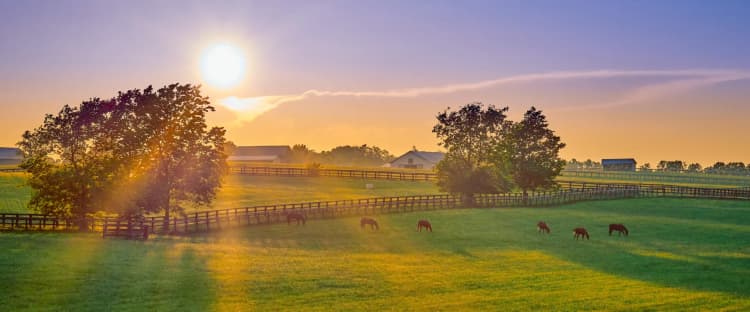
Getting Up Close to Big Ben in London
We meet in Westminster Hall, the oldest existing part of London’s Palace of Westminster, which dates to the 11th century. I’m here to see another iconic London landmark, climbing the Elizabeth Tower to get to eye-level with one of the most famous clocks in the world, the Great Clock at Westminster, and its largest bell, Big Ben.
We’re first led through the Palace of Westminster and the beating heart of the British Government to the base of the Elizabeth Tower, which houses Big Ben and the Great Clock, and the climb of 334 steps to the belfry begins. Friendly guides pace the group so it feels comfortable but not rushed. We start out at 9:30am, aiming to be at Big Ben to hear it strike for 11am. The familiar toll of the famous bell as it rings across the London skyline is an iconic British sound. It pealed when the Queen died, the sound announces national news bulletins, and the clock face has been featured in several movies.

That distinctive bong has always been there—or almost always. For five years, it wasn’t. Big Ben, the Great Clock, and the Elizabeth Tower that houses them both have just undergone an 80-million pound restoration. Over 500 artisans were involved in the restoration, including gilders, stonemasons, and horologists, and the clock returned to service in late November 2022—along with a new way for visitors to see it.
At the first level, our group learns about the history and restoration of the Elizabeth Tower, which was completed in 1859. Following the 1834 fire in the Houses of Parliament, the architect Charles Barry won a competition to design the new building in 1835. His plans included a clock tower. Barry initially asked Benjamin Lewis Vulliamy to design a clock, but this led to protests from other clockmakers, so a competition was announced. The Astronomer Royal, Sir George Airy, was appointed a referee in 1846 and had very demanding specifications to design the most accurate clock in the world. Edward Beckett Denison became a joint referee in 1848, and the contract was awarded to distinguished clockmaker Edward John Dent in 1852 and completed by his stepson Frederick Dent. The clock was constructed using Denison’s design.
A unique feature is the Double Three-legged Gravity Escapement, invented by Denison, which gives the pendulum the impulse required to keep moving and ensures each swing is regular. When the pendulum swings, it touches one of the two steel gravity arms, pivoted on each side of the mechanism. The weight of the gravity arm makes the pendulum swing in the opposite direction, unlocking the escapement. The other gravity arm moves, enabling the pendulum to swing back and unlock the going train. The weight moves the minute hand of the clock forward.
We climb more steps to the clock room where the famous mechanism lies. The Palace of Westminster has two clock technicians who are responsible for ensuring the over 2,000 clocks in the Palace of Westminster run accurately, including the Great Clock. Even today, the clock mechanism is wound by hand three times a week, a process that has taken place for more than 150 years. Look carefully, and you can see indentations in the floor where people have stood to wind the clock.
As the 3/4-hour chime starts, there’s a whirring as the cogs wind around and the weights fall. This 3/4-hour tone alerts us that we have just 15 minutes to reach Big Ben. Time stops for no one.
The steps get narrower as we arrive at the doorway to the belfry. The wind whistles through the gaps between the roof space and the walls, and the temperature is cooler. Directly below are crowds of people, completely oblivious to us.
Big Ben weighs around 30,000 pounds (13.7 tons) and is 7.6 feet high. The hammer that strikes Big Ben weighs 440 pounds (200 kilograms). Making our way across wood and metal platforms to the side of Big Ben, we are handed earplugs and given strict instructions to insert them when the guide signals.
At one minute to 11, I slip the plugs into my ears. The familiar clock chime sounds across Westminster, and I stare at the hammer on Big Ben, waiting, waiting. I feel excited but wonder how loud it will be. I’m as close as I can get to the bell, and I feel on edge, in anticipation. Nobody speaks.
Then, suddenly, the familiar bong peals out across London eleven times, slowly and with precision. Surprisingly, I feel emotional at the sound, one that is so familiar to me from major national events, the news, and working in London. Although I’m wearing earplugs, the sound resonates across the belfry, and the hairs on the back of my neck tingle. It is truly magnificent to hear the famous bell and to be so close.

I walk past the great bell and descend to the glass-fronted clock face. Through the frosted glass, the clock hands and figures are visible in reverse, freshly painted in deeply pigmented Prussian blue. As a part of the restoration, the original Victorian colors have been restored. Each dial is about 23 feet (7 meters) in height—the hands nearly 9 feet (2.7 meters) and 14 feet (4.2 meters) long. I’m so close to that iconic clock face, immortalized in Mary Poppins, Peter Pan, and The 39 Steps, that it feels surreal, but I also feel dwarfed by the size. I’m mesmerized by the hands moving as the minutes tick away.
We pace the walkway, getting views of the clock from each of the four sides of the Elizabeth Tower, absorbing the magical moment of being that close to the world’s most famous timepiece, before descending back to the streets below.
Getting there
Westminster is in Central London. The nearest underground station is Westminster. Thames Uber Boats have a stop at Westminster Bridge. There are a few airports that serve London, but most flights from the US arrive at London Heathrow (LHR) or Gatwick (LGW) airports.
Average Going deal price for cheap flights to London: $525 RT ($1,000)
How to do it
How to book: All tours of Big Ben and the Elizabeth Tower must be pre-booked via the UK Parliament website. Tickets are released each month for dates three months in advance and are snapped up quickly. Subscribe to the mailing list so you get advance notifications of upcoming tours. Access to Big Ben is via the Palace of Westminster, which houses the UK Parliament. You must go through security screening before the visit, which can take up to 45 minutes. You must also bring a photo ID. Instructions about preparing for your visit are emailed to you in advance. If you book the 9:30am tour, you will arrive to hear Big Ben ring 11 times. However, booking later in the day means you get to hear fewer bongs. Your ticket includes access to Westminster Hall and to the public gallery of the UK Parliament so you can see a debate in action if a session is in progress.
Tips and considerations: The Elizabeth Tower has no lift or bathrooms, and with 334 steps to climb, is not for everyone. Appropriate shoes (think sneakers, not open-toed sandals) must be worn. It can be cold in the belfry, so a jacket is useful. All belongings, including phones and cameras, must be stored in lockers before the tour. There is no photography allowed for safety and security reasons. Bathrooms are available in Westminster Hall, and there is also a cafe.
Cost: £25 for adults and £10 for children aged 11-17. Children under 11 are not permitted.
Other London Guides
Published December 27, 2023
Last updated January 12, 2024
Articles you might like
View AllTreat your travel to cheap flights
Most deals are 40-90% off normal prices with great itineraries from the best airlines. If it's not an amazing deal, we won't send it. Sign up for free to start getting flight alerts.




